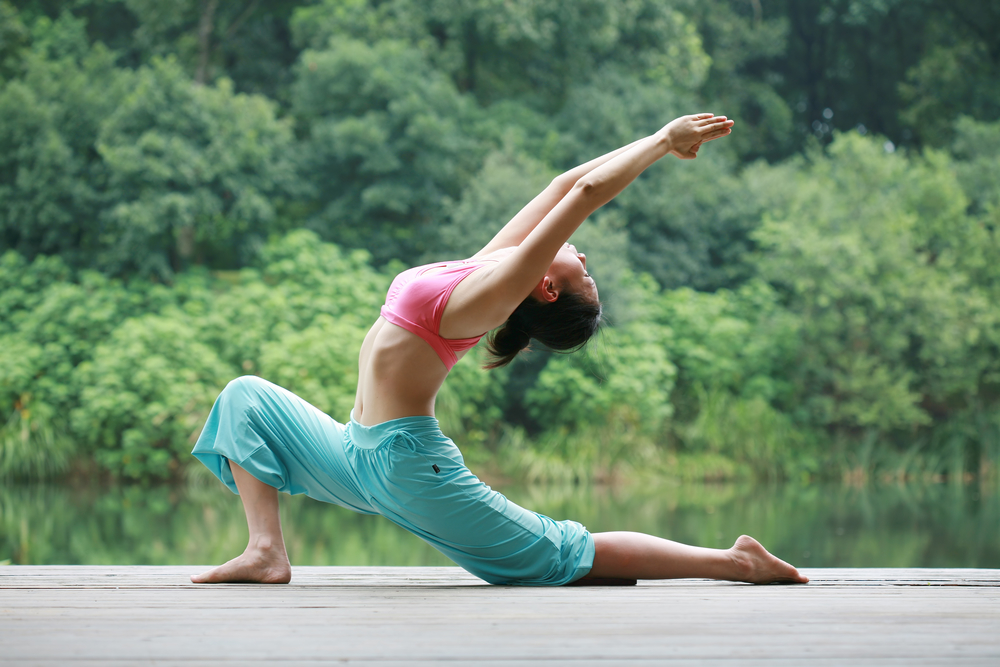Tips for Teachers to Have a Happy and Healthy Vinyasa Class
 Hopefully, you've had the opportunity to attend a vinyasa yoga class that left you feeling inspired and open to new possibilities--not just in your body, but also in your life. Unfortunately, you've also probably taken a class that left you feeling eh.
Hopefully, you've had the opportunity to attend a vinyasa yoga class that left you feeling inspired and open to new possibilities--not just in your body, but also in your life. Unfortunately, you've also probably taken a class that left you feeling eh. So what makes a great yoga class? Of course, confidence is a huge component (and one that comes with time), but even a recent graduate of a yoga teacher training can conduct a powerful vinyasa class.
Here are 5 simple guidelines for a happy and healthy Vinyasa class:
1. Balance the Ha and the tha.
Hatha yoga is the physical practice of yoga that includes asana (postures.) When examining the word hatha, we see that ha translates to solar energy, and tha represents lunar energy. Ha and Tha must be present in a class, meaning that for every pose that requires strength, we must also provide a pose that offers ease.
Classes often have too much of one or the other, and we leave feeling imbalanced and worn out. Similar to yin and yang, ha and tha are meant to awaken and calm, simultaneously.
2. Introduce yoga postures from simple to complex.
Kramas are stages of the asana or posture, and the stages should be introduced from simple to more complex. For example, offer Warrior II before Half-Moon, which requires a greater level of effort, since it requires standing on one leg. If a student is very new to the practice, staying in Warrior II may be the appropriate krama for that individual.
A teacher should offer a variety of kramas based on who is in the class, but note that the general rule in yoga is to teach to the 80%.
3. Do not move from closed hips to open hips more than once before a vinyasa.
This is important in creating a flow that feels good in the body, as it will prevent the student from placing excessive weight on the hip joint while moving hip positioning.
For example, you may go from Warrior I to Warrior II, but do not transition back to Warrior I in that same sequence. It would be more appropriate from Warrior II to keep the open hip alignment, so perhaps Triangle or Extended Side Angle could come next.
4. Let the class mirror the cycle of life.
Start off with gentle movements and simple connection to the breath, body, and state of mind. This progression reminds me of the path from birth to childhood. Then, we begin to generate heat, with more fluid connection of movement to breath, perhaps doing some Sun Salutes repeated a few times. This wave of the class is synonymous with the teenage years.
Then we move to the true challenges, the postures that make us a bit more vulnerable, that require us to stay, even when we don’t want to. This reminds me of adulthood. A good portion of class is spent in the adult years, until we begin to slow down. We reach the floor with back bends and hip openers, and here we practice patience. Eventually, we move into the most difficult posture of all, Savasana. In this, we prepare to die with grace, with our palms facing up as a sign that we are ready with acceptance, having let go of any attachments. Again, it's the hardest pose of all.
5. Don’t rush Savasana.
Allow at least five minutes for the students to truly rest, as relaxation is a sure way to purify the body and the mind. As it is the most challenging pose, it's also the most important pose in all of yoga. So, please don’t cheat your students out of an opportunity for much needed rest.

No comments:
Post a Comment